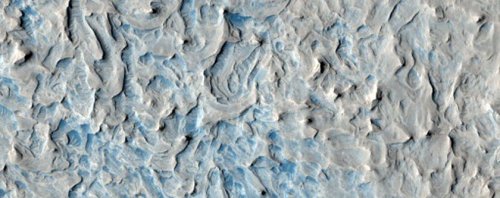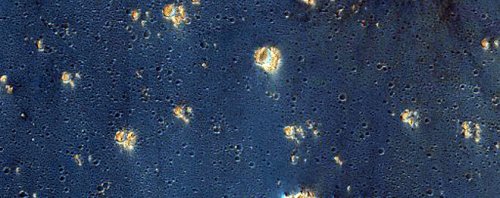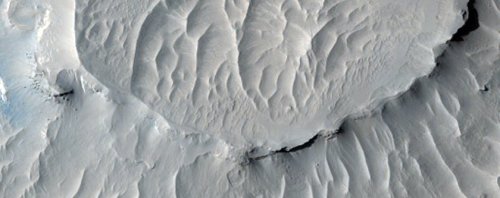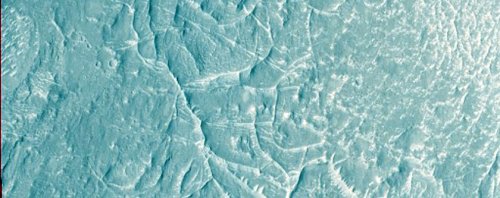space-little-girl-blog
Kristina | 17 | space and scifi lover | side blog We are nothing but space dust trying to find its way back to stars
57 posts
Latest Posts by space-little-girl-blog
NASA Dives Deep into the Search for Life
NASA logo. May 30, 2018 Off the coast of Hawaii’s Big Island and more than 3,000 feet beneath the ocean surface lie the warm, bubbling springs of a volcano — a deep-sea location that may hold lessons for the search for extraterrestrial life.
Artist rendering showing an interior cross-section of the crust of Enceladus, which shows how hydrothermal activity may be causing the plumes of water at the moon’s surface. Image Credits: NASA-GSFC/SVS, NASA/JPL-Caltech/Southwest Research Institute. Here, NASA and its partners are blending ocean and space exploration, with a project called SUBSEA, short for Systematic Underwater Biogeochemical Science and Exploration Analog. Lessons learned in both fields will be mutually beneficial and could help design future science-focused missions across the solar system. Saturn’s moon Enceladus and Jupiter’s moon Europa are thought to have liquid oceans and hydrothermal activity under icy crusts. Locations on Earth with key similarities to future deep-space destinations are called analog environments. SUBSEA’s target, the springs emerging from a volcano forming the next Hawaiian island, called the Lō`ihi seamount, is an analog for these ocean worlds. When NASA’s Cassini mission to Saturn discovered a plume of water erupting from beneath the icy surface of Enceladus, the characteristics of the plume told scientists what conditions might be like on the sea floor. This included the temperature, pressure and composition, and suggested the presence of hydrothermal activity. Scientists think these moons are good places to look for potential life, because water interacting with rock on their sea floors could yield chemical reactions that would make microbial metabolism possible.
Image above: Dramatic jets of ice, water vapor and organic compounds spray from the south pole of Saturn’s moon Enceladus in this image captured by NASA’s Cassini spacecraft in November 2009. Image Credits: NASA/JPL-Caltech/Space Science Institute. Lō`ihi is an especially good place to test predictions about seafloor hydrothermal systems and their ability to support life. Previous research focused more on locations where tectonic plates come together, but the Lō`ihi seamount involves molten magma erupting from the middle of one of these plates. This is the type of volcanic activity scientists think could be similar to seafloor volcanoes that may exist on Europa and Enceladus. The zones where plates meet may actually be too hot to provide a realistic representation of hydrothermal activity on the moons of Jupiter and Saturn. Throughout the 2018 SUBSEA expedition aboard the vessel Nautilus, the team’s scientists from NASA, the National Oceanic and Atmospheric Administration and various academic institutions will study the conditions around Lō`ihi’s seafloor springs across a range of pressures and temperatures. What they learn here will increase our understanding of the potential for conditions that could support life forms on other ocean worlds. Learn more: Systematic Underwater Biogeochemical Science and Exploration Analog (SUBSEA): https://www.nasa.gov/ames/subsea Images (mentioned), Text, Credits: NASA/Abigail Tabor. Best regards, Orbiter.ch Full article

Earth and Space Station


Coronal mass ejection
A coronal mass ejection (CME) is a significant release of plasma and magnetic field from the solar corona. They often follow solar flares and are normally present during a solar prominence eruption. The plasma is released into the solar wind, and can be observed in coronagraph imagery.
Coronal mass ejections are often associated with other forms of solar activity, but a broadly accepted theoretical understanding of these relationships has not been established. CMEs most often originate from active regions on the Sun’s surface, such as groupings of sunspots associated with frequent flares. Near solar maxima, the Sun produces about three CMEs every day, whereas near solar minima, there is about one CME every five days.

Coronal mass ejections release large quantities of matter and electromagnetic radiation into space above the Sun’s surface, either near the corona (sometimes called a solar prominence), or farther into the planetary system, or beyond (interplanetary CME). The ejected material is a magnetized plasma consisting primarily of electrons and protons. While solar flares are very fast (being electromagnetic radiation), CMEs are relatively slow.
Coronal mass ejections are associated with enormous changes and disturbances in the coronal magnetic field. They are usually observed with a white-light coronagraph.
Impact on Earth
When the ejection is directed towards Earth and reaches it as an interplanetary CME (ICME), the shock wave of traveling mass causes a geomagnetic storm that may disrupt Earth’s magnetosphere, compressing it on the day side and extending the night-side magnetic tail. When the magnetosphere reconnects on the nightside, it releases power on the order of terawatt scale, which is directed back toward Earth’s upper atmosphere.

Solar energetic particles can cause particularly strong aurorae in large regions around Earth’s magnetic poles. These are also known as the Northern Lights (aurora borealis) in the northern hemisphere, and the Southern Lights (aurora australis) in the southern hemisphere.

Coronal mass ejections, along with solar flares of other origin, can disrupt radio transmissions and cause damage to satellites and electrical transmission line facilities, resulting in potentially massive and long-lasting power outages.
To learn more, click here.
Image credit: Alex Conu
Animation: Science Channel & NASA/Goddard
Black holes
A black hole is a region of spacetime exhibiting such strong gravitational effects that nothing—not even particles and electromagnetic radiation such as light—can escape from inside it. The theory of general relativity predicts that a sufficiently compact mass can deform spacetime to form a black hole. The boundary of the region from which no escape is possible is called the event horizon. Although the event horizon has an enormous effect on the fate and circumstances of an object crossing it, no locally detectable features appear to be observed. In many ways a black hole acts like an ideal black body, as it reflects no light.

The idea of a body so massive that even light could not escape was briefly proposed by astronomical pioneer and English clergyman John Michell in a letter published in November 1784. Michell’s simplistic calculations assumed that such a body might have the same density as the Sun, and concluded that such a body would form when a star’s diameter exceeds the Sun’s by a factor of 500, and the surface escape velocity exceeds the usual speed of light.

At the center of a black hole, as described by general relativity, lies a gravitational singularity, a region where the spacetime curvature becomes infinite. For a non-rotating black hole, this region takes the shape of a single point and for a rotating black hole, it is smeared out to form a ring singularity that lies in the plane of rotation. In both cases, the singular region has zero volume. It can also be shown that the singular region contains all the mass of the black hole solution. The singular region can thus be thought of as having infinite density.

How Do Black Holes Form?
Scientists think the smallest black holes formed when the universe began.
Stellar black holes are made when the center of a very big star falls in upon itself, or collapses. When this happens, it causes a supernova. A supernova is an exploding star that blasts part of the star into space.

Scientists think supermassive black holes were made at the same time as the galaxy they are in.
Supermassive black holes, which can have a mass equivalent to billions of suns, likely exist in the centers of most galaxies, including our own galaxy, the Milky Way. We don’t know exactly how supermassive black holes form, but it’s likely that they’re a byproduct of galaxy formation. Because of their location in the centers of galaxies, close to many tightly packed stars and gas clouds, supermassive black holes continue to grow on a steady diet of matter.

If Black Holes Are “Black,” How Do Scientists Know They Are There?
A black hole can not be seen because strong gravity pulls all of the light into the middle of the black hole. But scientists can see how the strong gravity affects the stars and gas around the black hole.
Scientists can study stars to find out if they are flying around, or orbiting, a black hole.

When a black hole and a star are close together, high-energy light is made. This kind of light can not be seen with human eyes. Scientists use satellites and telescopes in space to see the high-energy light.

On 11 February 2016, the LIGO collaboration announced the first observation of gravitational waves; because these waves were generated from a black hole merger it was the first ever direct detection of a binary black hole merger. On 15 June 2016, a second detection of a gravitational wave event from colliding black holes was announced.

Simulation of gravitational lensing by a black hole, which distorts the image of a galaxy in the background
Animated simulation of gravitational lensing caused by a black hole going past a background galaxy. A secondary image of the galaxy can be seen within the black hole Einstein ring on the opposite direction of that of the galaxy. The secondary image grows (remaining within the Einstein ring) as the primary image approaches the black hole. The surface brightness of the two images remains constant, but their angular size varies, hence producing an amplification of the galaxy luminosity as seen from a distant observer. The maximum amplification occurs when the background galaxy (or in the present case a bright part of it) is exactly behind the black hole.
Could a Black Hole Destroy Earth?
Black holes do not go around in space eating stars, moons and planets. Earth will not fall into a black hole because no black hole is close enough to the solar system for Earth to do that.

Even if a black hole the same mass as the sun were to take the place of the sun, Earth still would not fall in. The black hole would have the same gravity as the sun. Earth and the other planets would orbit the black hole as they orbit the sun now.
The sun will never turn into a black hole. The sun is not a big enough star to make a black hole.
More posts about black holes
Source 1, 2 & 3

IC 2118: The Witch Head Nebula
js

Elephant Trunk Nebula
When radiation and winds from massive young stars impact clouds of cool gas, they can trigger new generations of stars to form. This is what may be happening in this object known as the Elephant Trunk Nebula (or its official name of IC 1396A).
Image credit: X-ray: NASA/CXC/PSU/Getman et al, Optical: DSS, Infrared: NASA/JPL-Caltech

The lightest known star, OTS 44
js
After 20 years in space, the Cassini spacecraft is running out of fuel. In 2010, Cassini began a seven-year mission extension in which the plan was to expend all of the spacecraft’s propellant exploring Saturn and its moons. This led to the Grand Finale and ends with a plunge into the planet’s atmosphere at 6:32 a.m. EDT on Friday, Sept. 15.
The spacecraft will ram through Saturn’s atmosphere at four times the speed of a re-entry vehicle entering Earth’s atmosphere, and Cassini has no heat shield. So temperatures around the spacecraft will increase by 30-to-100 times per minute, and every component of the spacecraft will disintegrate over the next couple of minutes…
Cassini’s gold-colored multi-layer insulation blankets will char and break apart, and then the spacecraft’s carbon fiber epoxy structures, such as the 11-foot (3-meter) wide high-gain antenna and the 30-foot (11-meter) long magnetometer boom, will weaken and break apart. Components mounted on the outside of the central body of the spacecraft will then break apart, followed by the leading face of the spacecraft itself.
Make sure to follow us on Tumblr for your regular dose of space: http://nasa.tumblr.com.

Space Shuttle Discovery STS-133
Credit: NASA / GSFC / Rebecca Roth

Canada: After getting my feet well and truly soaked photographing the sea at sunset, it seemed like a good idea to go and stand in near-freezing temperatures for a couple of hours, just up the coast at Porteau Cove Provincial Park, writes photographer Alexis Birkill.
js

Air-to-air view of STS-42 Discovery after liftoff from KSC LC Pad … #Astronomy #Space #Spacegram #Spaceflight #Nasa #ESA #ASI #Astronaut #Universe #Cosmos #Sky #Earth #Nebula #Galaxy #Love #MarsGeneration #TheMarsGeneration #MoonColonist #Moon #Astro_Lorenzo
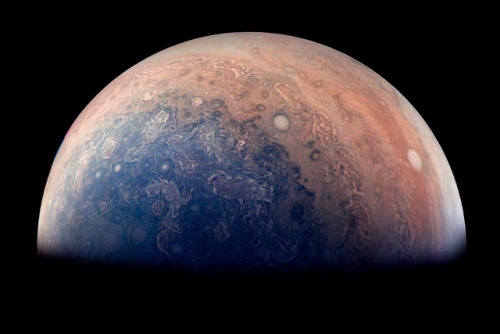
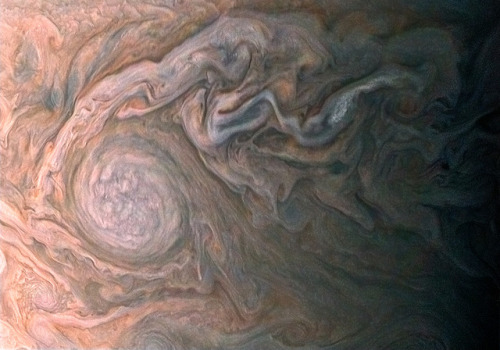
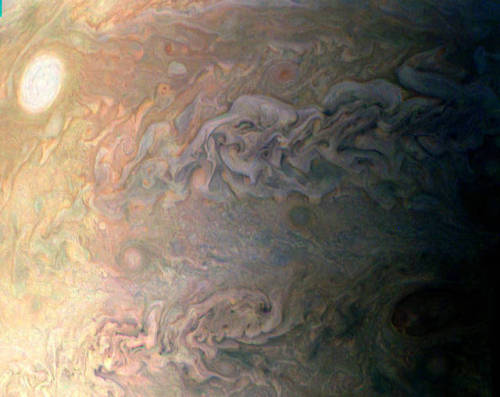

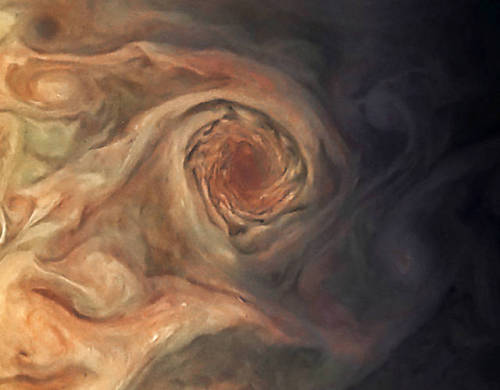
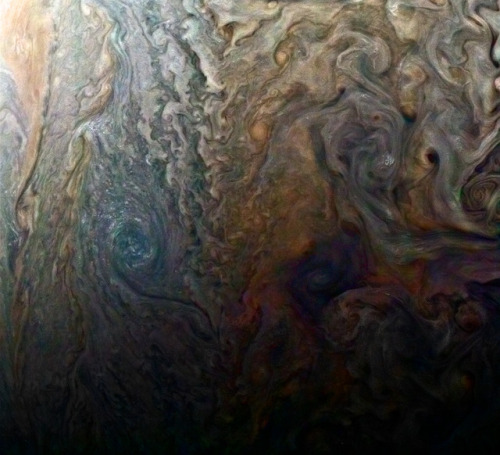
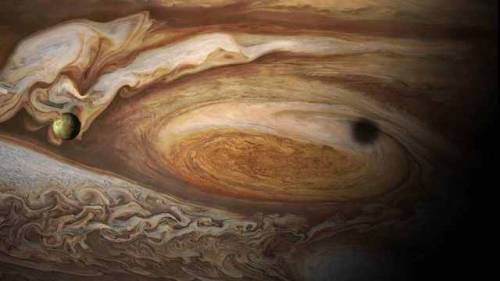
Jupiter as seen by Juno
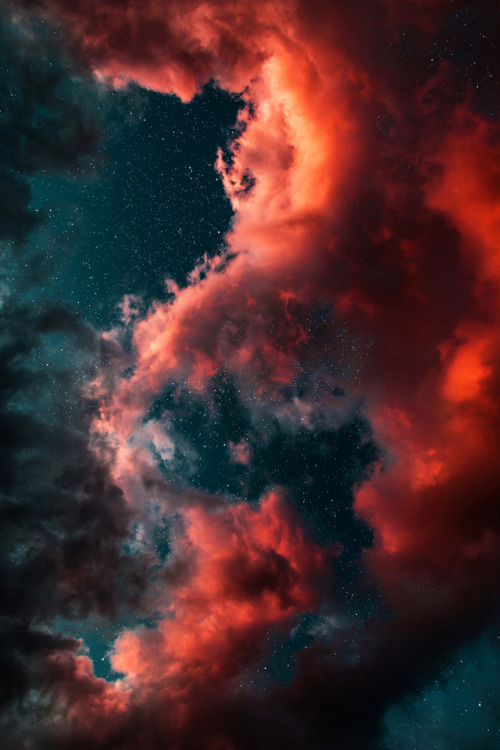

for all the space ppl out there, nasa is doing a live feed of earth in space on youtube rn! 👀💫🌍

Southern Craters and Galaxies : The Henbury craters in the Northern Territory, Australia, planet Earth, are the scars of an impact over 4,000 years old. When an ancient meteorite fragmented into dozens of pieces, the largest made the 180 meter diameter crater whose weathered walls and floor are lit in the foreground of this southern hemisphere nightscape. The vertical panoramic view follows our magnificent Milky Way galaxy stretching above horizon, its rich central starfields cut by obscuring dust clouds. A glance along the galactic plane also reveals Alpha and Beta Centauri and the stars of the Southern Cross. Captured in the regions spectacular, dark skies, the Small Magellanic Cloud, satellite of the Milky Way, is the bright galaxy to the left. Not the lights of a nearby town, the visible glow on the horizon below it is the Large Magellanic Cloud rising. via NASA
js

The Butterfly Nebula from Hubble
via reddit

Orion, Rosette Nebula, and a very small meteor Visit http://spaceviewsandbeyond.blogspot.com/2017/03/orion-rosette-nebula-and-very-small.html for more space pics

Soyuz launch July 2016
via reddit
Y’all are so excited about the new planetary discovery but I haven’t seen y’all share the Google doodle!

It’s so fucking adorable!

⚠️️ BREAKTHROUGH ⚠️️
Nasa is currently livestreaming a conference about the discovery of a new solar system !
“Astronomers have detected no less than seven Earth-sized worlds orbiting a cool dwarf star known as TRAPPIST-1.The six inner planets lie in a temperate zone where surface temperatures range from zero to 100C.
Of these, at least three are thought to be capable of having oceans, increasing the likelihood of life.
No other star system known contains such a large number of Earth-sized and probably rocky planets.”
I AM SO EXCITED


The Milkyway over the Himalayas.



The launch of the Scout launch vehicle at the Wallops Flight Facility, VA … #Astronomy #Space #Spacegram #Spaceflight #Nasa #ESA #ASI #Astronaut #Universe #Cosmos #Sky #Earth #Nebula #Galaxy #Love #MarsGeneration #TheMarsGeneration #MoonColonist #Moon #Astro_Lorenzo

This is true and sad.


